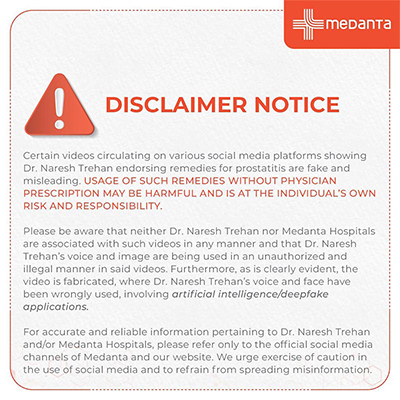2D Echo Test: Key Benefits & What to Expect

TABLE OF CONTENTS
- What Is a 2D Echo Test?
- Why Should You Undergo a 2D Echo?
- What Happens During the 2D Echo Test?
- Can a 2D Echo Detect a Heart Attack?
- Is Fasting Required For a 2D Echo Test?
- What Are the Uses of the 2D Echo Test?
- What Are the Complications and Risks Associated with the 2D Echo Test?
- Benefits of Getting a 2D Echo Test
- What Do the Results of a 2D Echo Test Show?
- Conclusion
- FAQs
Taking care of your heart is the key to living a long and healthy life. A 2D Echo test is an ideal tool used in assessing your heart health. It's a non-invasive imaging technique that assists in the evaluation of the structure and function of the heart. If you've been seeing symptoms or are just taking some early precautionary measures for your heart, a 2D echocardiogram test is a viable way.
In this blog, we will break down everything you need to know about the 2D echo procedure, from its purpose and benefits to what the results mean.
What Is a 2D Echo Test?
A 2D echo test, or 2D echocardiogram, is a type of cardiac ultrasound that uses sound waves to create real-time images of the heart. It allows doctors to examine the functioning of the heart and detect any abnormality that may lead to conditions such as valve disorders, heart failure, and congenital heart defects.
Such a test is often included as part of a heart health check-up because it gives important information on how well your heart is pumping blood and if there are any structural problems.
Why Should You Undergo a 2D Echo?
A 2D echo is indicated for people who:
Have symptoms such as chest pain, shortness of breath, dizziness, or an irregular heartbeat.
Have a family history of heart disease.
Are receiving treatment for heart conditions and need to be monitored for progress.
Have high blood pressure or diabetes, both of which increase the risk for heart complications.
Require preoperative heart check-ups before undergoing surgery.
Even if you feel healthy, regular heart health check-ups with 2D echo tests help identify possible problems early to prevent serious complications.
What Happens During the 2D Echo Test?
2D echo test is a simple and painless process:
You will lie on an exam table, and a technician will apply a special gel to your chest.
A handheld transducer is moved across your chest to capture ultrasound images.
The sound waves are reflected off the heart, creating detailed images on a monitor.
The length of the test is usually between 15 to 30 minutes, depending on the complexity of the exam.
It involves no use of needles, radiation, or pain. These things make it such a safe yet effective way of checking one's heart health.
Can a 2D Echo Detect a Heart Attack?
The 2D echocardiogram cannot detect a heart attack in progress. Still, it can help identify if a heart attack had occurred earlier. The test helps find:
Area of the heart that is not pumping correctly owing to damaged tissue as a result of a heart attack.
Reduced blood flow to certain regions of the heart.
Weakened heart muscle function, which can indicate a history of heart disease.
If a heart attack is suspected, doctors may recommend additional tests like an ECG, cardiac enzyme tests, or a stress echocardiogram.
Is Fasting Required For a 2D Echo Test?
In most cases, no fasting is required for a routine 2D echo test. However, if your doctor has ordered a stress echocardiogram or a transoesophageal echocardiogram, you may be asked to fast from food and drinks for a few hours before the test. Always listen to your doctor when it comes to specific instructions concerning this test for the best results.
What Are the Uses of the 2D Echo Test?
A 2D echo test is a flexible diagnostic tool with various applications, including:
The assessment of heart function in patients with high blood pressure, diabetes, or other risk factors.
Diagnosing heart valve diseases such as stenosis or regurgitation.
Assessing congenital heart defects in children and adults.
Monitoring the effectiveness of treatments for heart failure or other cardiac conditions.
Detecting fluid buildup around the heart, also known as pericardial effusion.
This test forms an integral part of the routine check-up for heart health and helps cardiologists devise the best treatment plans for their patients.
What Are the Complications and Risks Associated with the 2D Echo Test?
A 2D echocardiogram is one of the safest diagnostics created in modern medicine. The test is non-invasive, using only ultrasound waves instead of radiation, and does not pose any dangers of dangerous side effects or long-term effects to the patients. Still, some minor complications can be linked with the 2D echo test, depending upon the type of the test.
The most common issue for a standard 2D echo study is mild discomfort when the technician presses the transducer against the chest. That pressure is needed to get pictures that are clear, but it is rarely painful for most people. Some individuals will notice that the gel being applied to the chest is cold, but that is not an issue.
Those who undergo stress echocardiogram may possibly experience dizziness, shortness of breath, or irregular heartbeats. These symptoms usually disappear soon, and during the testing, one is always accompanied by medical professionals for their safety.
However, those patients who undergo a transesophageal echocardiogram (TEE), in which a probe is passed through the throat to get more images of the heart, may feel soreness in the throat, hoarseness lasting at least one to two days, and mild nausea. There are very rare occurrences of complications, including irritation in the oesophagus and reactions to sedation.
Benefits of Getting a 2D Echo Test
There are a few advantages associated with a 2D echo test, making it one of the most essential diagnostic and monitoring tools for various heart conditions. The benefits associated with echocardiography make it very important, whether in routine heart health check-ups or investigation of symptoms.
Early Detection of Heart Issues
One of the major benefits of a 2D echocardiogram is the early detection of abnormalities in the heart. The test can reveal conditions such as valve disorders, weakened heart muscles, or congenital defects much before they start causing serious complications like heart failure or stroke.
Non-Invasive and Painless Procedure
In comparison to other cardiac tests that sometimes require catheters or surgical intervention, a 2D echo test is completely non-invasive. There is no requirement for the use of needles, radiation, or anaesthesia in this process; hence, it is safe for all age-group patients, including pregnant women and elderly patients.
No Radiation Exposure
Since the 2D echo technique uses ultrasound and not X-rays, all potential risks of radiation are effectively eliminated. Thus, it provides a good scanning tool to be used more regularly on patients who have chronic diseases of the heart.
Results Within No Time
A 2D echocardiogram creates images in real time, which enables doctors to see how the heart works while the test is ongoing. This usually lasts between 15-30 minutes, and results can be quickly reviewed for fast decision-making.
Guides Treatment Plans
For patients with pre-existing heart conditions, a 2D echo test allows doctors to trace the progress of the disease and thereby alter the treatment plans accordingly. It can also be used to find out how the body is responding to medication or surgical treatment.
What Do the Results of a 2D Echo Test Show?
Your doctor will interpret the results of a 2D echocardiogram to determine:
Size and shape of the heart.
Pumping strength of the heart.
Functioning of the heart valves.
Fluid presence around the heart.
Past heart damage or disease
In case an abnormality is found, your doctor may recommend some additional tests and treatments based on the outcomes.
Conclusion
A 2D echo test helps maintain a healthy heart and prevent critical cardiac conditions. Whether you are symptomatic or just a prevention-oriented person, this non-invasive test can give insights that are invaluable. By getting a cardiac ultrasound included in your heart health checkup, you can stay ahead of heart problems and enable timely intervention.
If you or someone you know needs to get a 2D echocardiogram test done, visit your nearest super-speciality hospital as soon as possible!
FAQs
How long does a 2D echo test take?
A 2D echo test typically takes 15-30 minutes to complete.
Is a 2D echocardiogram painful?
No, a 2D echocardiogram is a completely painless and non-invasive test.
Can a 2D echo detect blocked arteries?
A 2D echo test can suggest poor blood flow but does not directly detect artery blockages—an angiogram is needed for that.
Do I need a doctor’s prescription for a 2D echo test?
Yes, a 2D echo is usually performed based on a doctor’s recommendation.
Can I eat before a 2D echo test?
Yes, fasting is not required for a standard 2D echo test, but some specialised echocardiograms may require it.
Citations
Echocardiogram. (2024, September 12). Johns Hopkins Medicine. https://www.hopkinsmedicine.org/health/treatment-tests-and-therapies/echocardiogram
Eske, J. (2023, November 28). What is an echocardiogram? https://www.medicalnewstoday.com/articles/326727
Fagiry, M. A., Hassan, I. A., & Mahmoud, M. Z. (2019). Two-dimensional echocardiography in the diagnosis of ischemic heart disease. Journal of Radiation Research and Applied Sciences, 12(1), 177–185. https://doi.org/10.1080/16878507.2019.1594129
Key, A. P. (2023, November 27). What to expect during an echocardiogram. WebMD. https://www.webmd.com/heart-disease/diagnosing-echocardiogram
Professional, C. C. M. (2024, December 19). Echocardiogram. Cleveland Clinic. https://my.clevelandclinic.org/health/diagnostics/16947-echocardiogram


